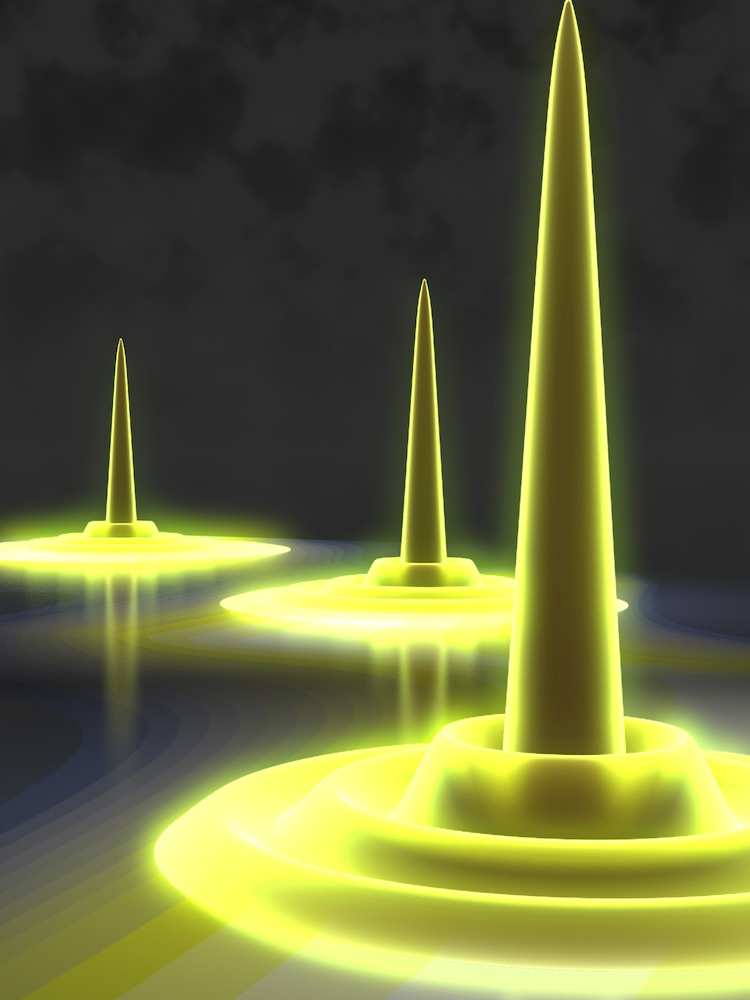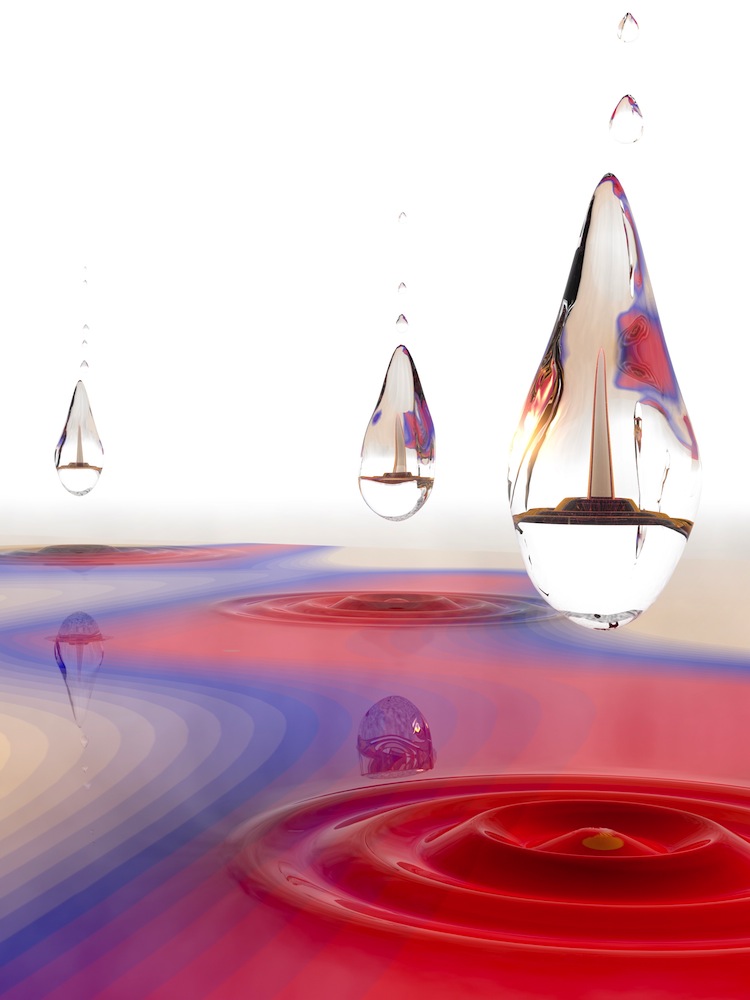Quantum Dropleton: Weird New Particle Acts Like Liquid

Physicists can spend years seeking new particles to illuminate aspects of nature's laws, but an international team decided instead to make their own particles.
Called a dropleton or quantum droplet, the newly created "particle" is actually a short-lived cluster of electrons and positive charges called "holes." Like other so-called quasiparticles, dropletons act like single particles.
At the Philipps-University of Marburg, Germany, and Joint Institute for Lab Astrophysics at the University of Colorado, researchers made an agglomeration of electrons and holes that was bigger than any created before — 200 nanometers, or billionths of a meter, across. That is almost big enough to see with a good microscope, about one-50th the thickness of a cotton fiber. Before now, physicists had created two-pair groups of electrons and holes, but never such an agglomeration that could form this liquid-like quantum droplet or dropleton. [Wacky Physics: The Coolest Little Particles in Nature]
These dropletons behave according to the rules of quantum physics, and that means scientists can use the particles to investigate how light interacts with matter — a process also governed by quantum rules.
Because the dropletons are so large, in particle terms, they might also help physicists locate the boundaries between the quantum world of the very small and the classical world of the human scale, the physicists report in the Feb. 27 issue of the journal Nature.
Making a dropleton
Get the Space.com Newsletter
Breaking space news, the latest updates on rocket launches, skywatching events and more!

To make the dropleton, Mackillo Kira, a professor of physics at Philipps University, and colleagues at the Joint Institute for Laboratory Astrophysics in Colorado fired quick pulses of an extremely powerful laser at a block of gallium arsenide, the same material used in red light-emitting diodes (LEDs). Each pulse lasted less 100 femtoseconds, or billionths of a billionth of a second. When the light hit the gallium arsenide, the atoms released, or excited, electrons, which moved around in the gallium arsenide like a gas or plasma. When the negatively charged electrons exited their places around the atoms, they left behind regions of positive charge called holes.
"In a sense, [dropletons] are particles whose properties are largely determined by the environment, which makes them so exciting," Kira told Live Science in an email. For instance, semiconductors work best, Kira said, because the way their electrons are arranged makes it easier to excite them.
Since the dropleton is an artificial particle, containing a number of electrons, it acts something like a super-sized electron. That property means physicists could essentially modify the size of an electron for experiments. "This allows us to engineer … a man-made mass for an electron instead of the universal constant measured in free space," Kira told Live Science in an email.
Two-by-two
Of all the electron-hole particles that have been created, this is the first to ever hold enough pairs to form a liquid-like droplet. [Liquid Sculptures: Dazzling Photographs of Falling Droplets]
Electrons and holes, having opposite charges, tend to form pairs, called excitons. These pairs are familiar to anyone who has used some types of solar panels, which employ special materials to separate the electron-hole pairs, freeing up electrons and generating current.
However, the excitons in this experiment were much more energetic. They had so much energy that they would clump together in groups as if they were water droplets clinging together. At that point, they were no longer excitons bound in pairs — they were dropletons.
The electrons, unbound from single holes, formed a kind of standing wave pattern around them. It's similar to the patterns that ordinary molecules make in liquids (think of a stone thrown into the water and the ripple pattern created), Kira said.
Dropletons don't last long, only 25 picoseconds, or trillionths of a second. But that's actually a relatively long time in terms of quantum-physical processes.
Kira added that the work suggests several interesting experiments. For instance, the photons that excite the electrons to form dropletons become entangled with the individual exciton pairs. That means it's possible to study such interactions, an ongoing area of research.
In addition, because dropletons entangle with the photons used to make the quasiparticles, physicists can use them to study storage of quantum states — potentially useful in designing quantum-based communications devices in which such states serve as the bits of information.
"The basic physical understanding obtained from these studies can improve our ability to rationally design optoelectronic devices," such as fiber-optic communications equipment, he said.
Follow us @livescience, Facebook & Google+. Original article on Live Science.
Join our Space Forums to keep talking space on the latest missions, night sky and more! And if you have a news tip, correction or comment, let us know at: community@space.com.

Jesse Emspak is a freelance journalist who has contributed to several publications, including Space.com, Scientific American, New Scientist, Smithsonian.com and Undark. He focuses on physics and cool technologies but has been known to write about the odder stories of human health and science as it relates to culture. Jesse has a Master of Arts from the University of California, Berkeley School of Journalism, and a Bachelor of Arts from the University of Rochester. Jesse spent years covering finance and cut his teeth at local newspapers, working local politics and police beats. Jesse likes to stay active and holds a fourth degree black belt in Karate, which just means he now knows how much he has to learn and the importance of good teaching.










